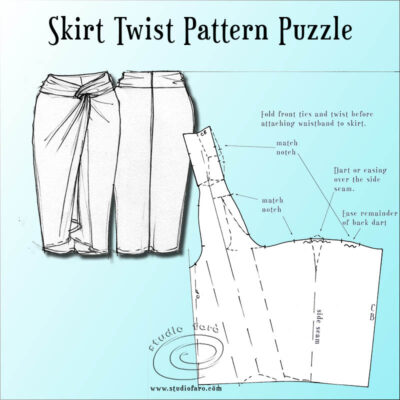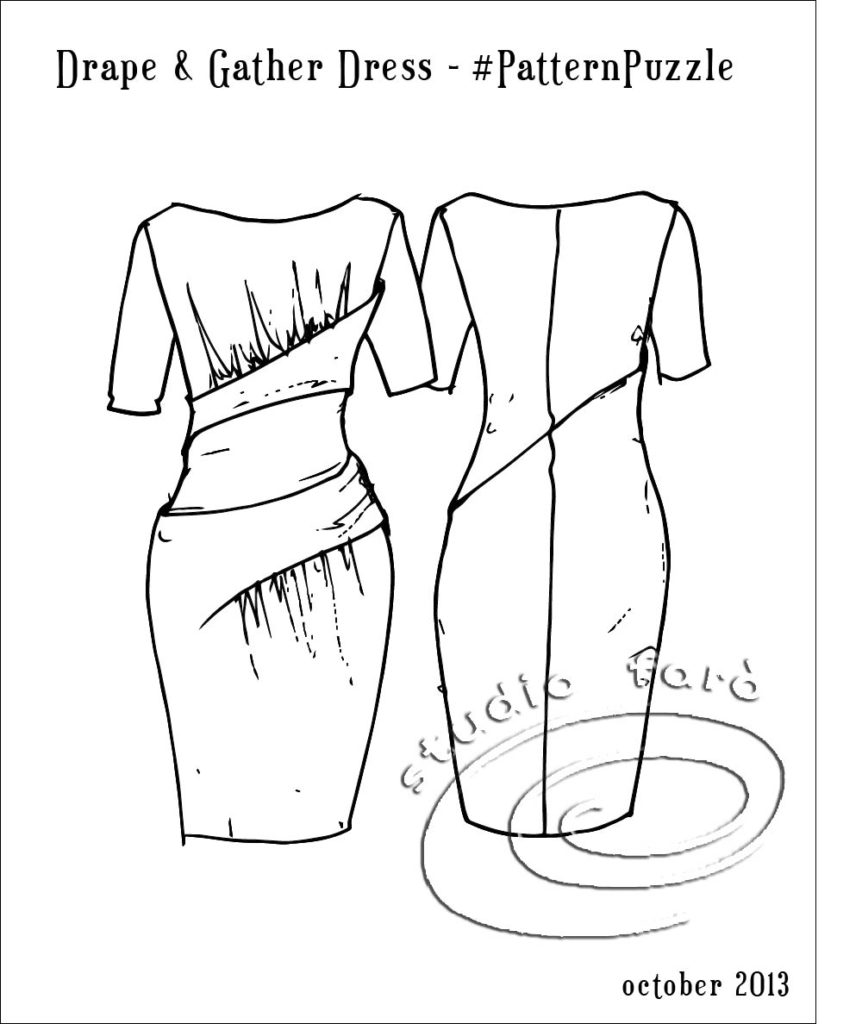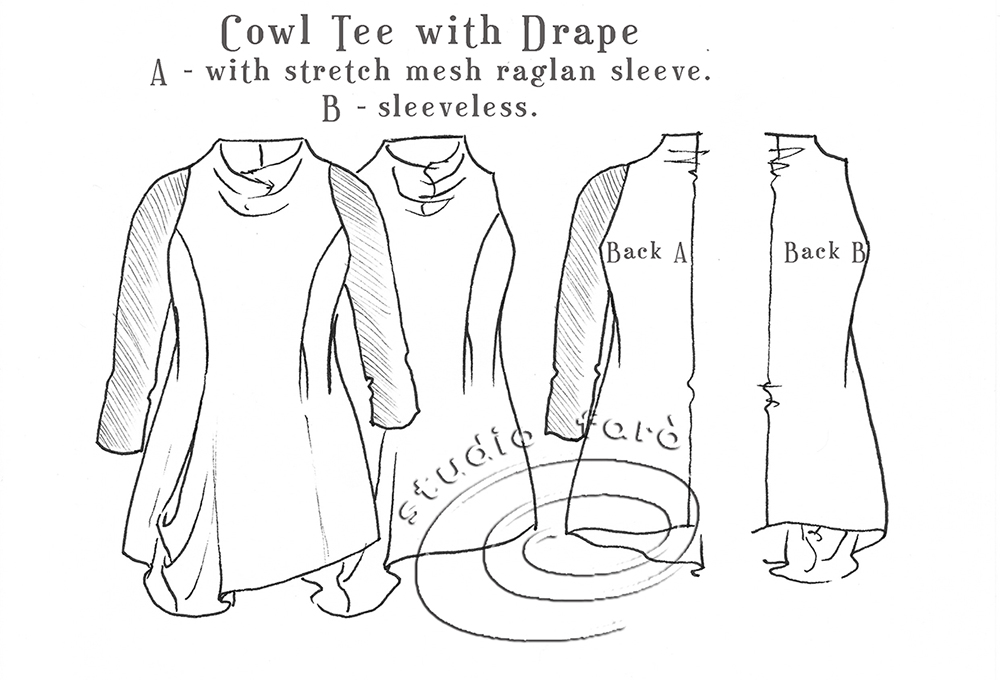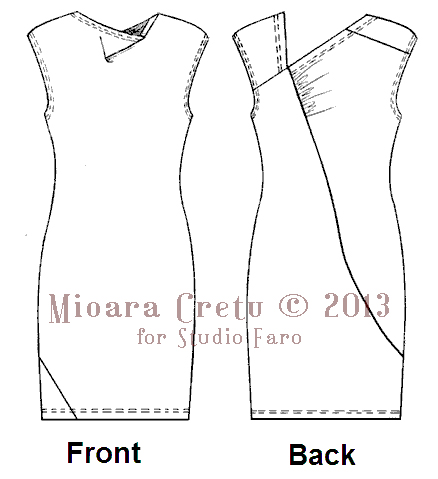18 Nov The Pocket Drape
Posted at 17:53h
in Fashion Design, Fitted Dress Block, Pattern Making Instructions, Pattern Puzzles
0 Comments
Last Saturday we all enjoyed a fab conversation about the #PatternPuzzle. As a bonus, Julie's friend, Lynn Hoffman, shared a fashion history connection with our puzzle and an 1880's polonaise jacket. When posting the sketch of the puzzle I included images of the historic reference. It is interesting to see how Lynn made the pattern shape connection with the drape and waterfall of these historic garments.











